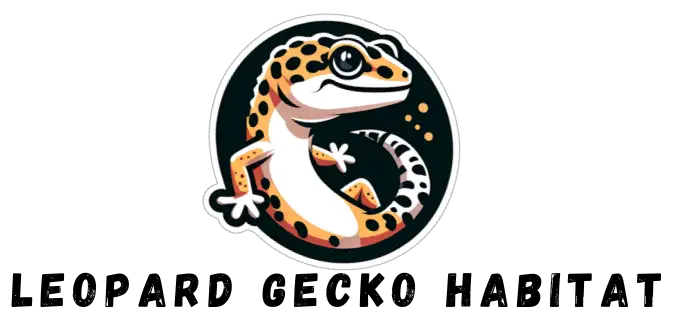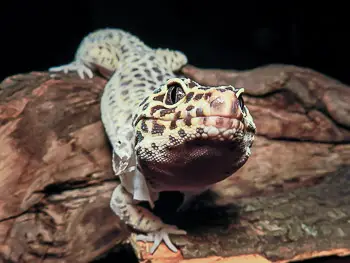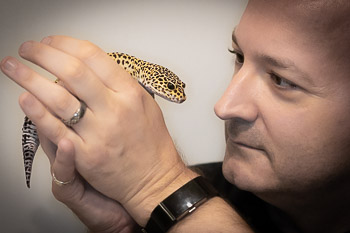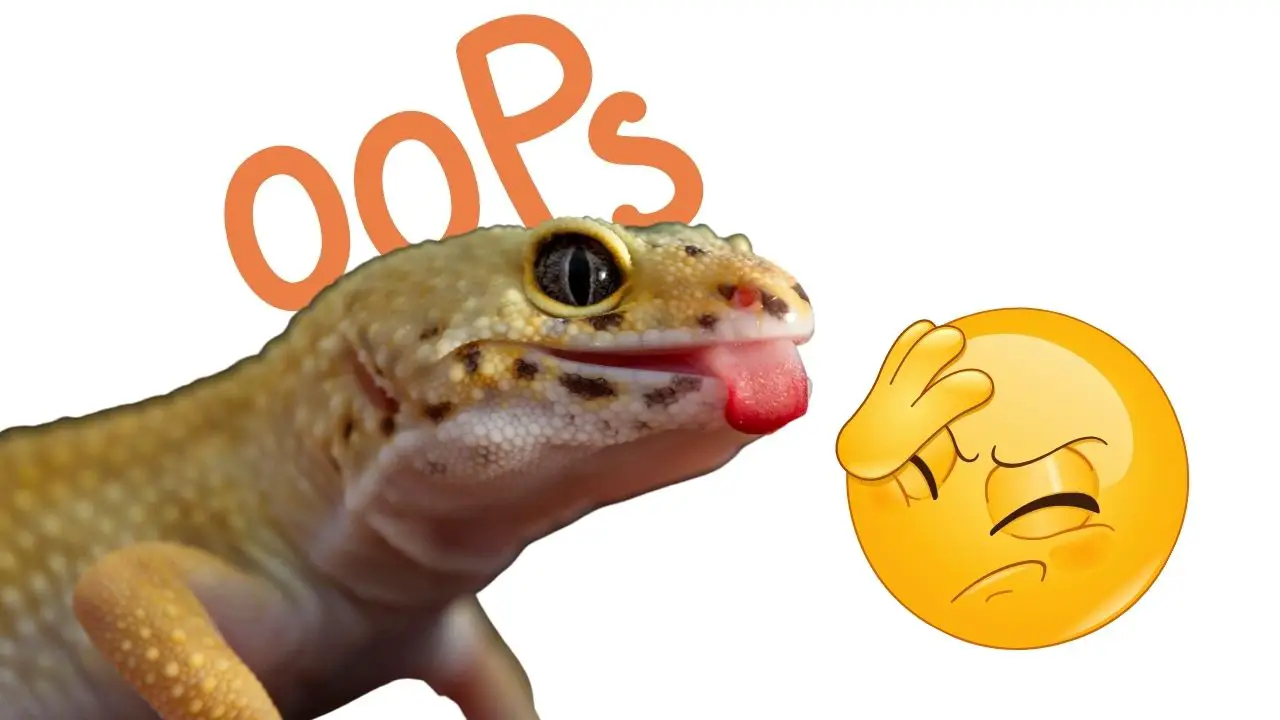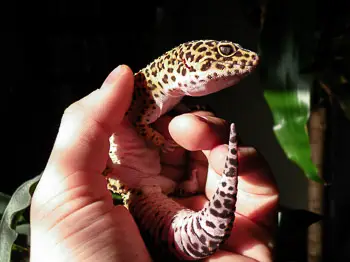Leopard geckos are hardy reptiles known for their docile and easy going demeanor. They are rarely aggressive, and easy to tame and handle. These traits make the leopard gecko a great choice for beginners or experienced reptile enthusiasts. When considering one of these little lizards as a pet, it’s important to understand some key traits about leopard gecko behavior.
Dusk till Dawn
Most resources cite leopard geckos as being nocturnal (active at night), though they tend to be more crepuscular. Crepuscular means leopard geckos are most active during dusk and dawn.
They prefer the twilight as the sun is rising and setting when the desert temperatures are cooler. There is also less competition (and less chance to be prey) at dusk and dawn, as the truly nocturnal hunters are not active during these times.
Since your leopard gecko is usually sleeping under cover or in a hide during daylight hours, they do not require UV lighting.
Related Post: Are leopard geckos nocturnal? – we go into more detail on what it means to be crepuscular.
Terrestrial/ground dwelling
Unlike many other varieties of geckos, leopard geckos cannot climb walls or glass. They don’t climb much at all. This is because leopard geckos do not have sticky toe pads (lamella) like other geckos, and instead have tiny hooked claws. As a result, they usually do not venture very high.
Blink of an Eye
By way of distinction from other geckos, leopard geckos have moveable eyelids and can sleep with their eyes closed. This is such a defining trait of the species, their Latin genus name Eublepharis Macularius refers to this feature (Eu means good, and blepharis means eyelid.)
Tail Waving vs Tail Rattling
Your leopard gecko may shake its tail. There are a few different motions you may see, and your gecko is trying to communicate something different with each of these tail movements.
Tail Waving
Leopard geckos will wave their tails in a slow back and forth motion as a defensive warning. It generally means something triggered your gecko’s ‘threat meter’ and it’s a bit spooked. Raising and waving the tail in a manner that makes the leopard gecko look larger; the movement focuses attention on the tail, which can be detached so the leopard gecko can escape.
They may wave their tails:
- To ward off predators
- To assert dominance
- Before launching at prey
If you have several males leopard geckos in the same enclosure and see the slow tail wave, it’s a good idea to separate them before someone loses a tail. (It’s an even better idea not to keep adult male leopard geckos together.)
Otherwise, this is a good time to leave your gecko alone until it calms down.
Tail Rattling
If your gecko rattles the tip of its tail rapidly, this is a sign of excitement. You may see this when male geckos are trying to get the attention of a potential mate.
Related Post: Interesting Facts about Leopard Gecko Tails
Licking and flicking of the tongue

You may observe leopard geckos like to lick everything, including you. This is due to the presence of a “Jacobson’s Organ” (also referred to as a “vomeronasal organ”) located in the roof of its mouth, similar to snakes. When a gecko flicks its tongue, it is picking up moisture particles from the air and can detect scents and odors. This allows the gecko to essentially “smell” with its tongue.
In addition to licking to get a sense of their surroundings, leopard geckos will lick their own eyes to clean them.
Leopard Gecko Sounds
Most lizards are only capable of making hissing sounds. Geckos possess vocal chords and are capable of making sounds that could be described as squeaks, clicks, barks, or croaks.
Geckos will vocalize to attract a mate, send social queues to other geckos, signal distress, or scare off predators.
Hatchlings or juveniles are more commonly vocal, especially when hungry or stressed. Adult leopard geckos may still vocalize, though it is much less frequent than younger geckos.
Related Post: Do Leopard Geckos Hiss?
Climbing the Walls
You may at times notice your leopard gecko trying to climb the glass or wall of its enclosure. Don’t worry, they can’t climb the glass (you can find out why in this post.) It may look like they’re trying to swim up the wall.
In small doses, this may look cure, and this is fairly normal leopard gecko behavior. However, if your leopard gecko makes a habit of trying to climb the glass, it may indicate something is wrong in the enclosure and it’s trying to escape.
Possible causes may include:
- Improper Temperature
- Your enclosure should have a warm and cool side so your gecko can self regulate. If your gecko cannot find a comfortable temperature, it may be trying to find a place more suitable. Make sure you’re providing proper heat and check out our post on the best leopard gecko heating.
- Hunger
- If your gecko is hungry and cannot find food, it may be seeking other places to hunt
- Loose insects are a bother
- Sometimes too much food can be undesirable. If there are loose feeder insects roaming the enclosure, they may be a nuisance to your gecko. Crickets especially can cause problems for smaller geckos.
- Overcrowding in the enclosure
- If you have multiple leopard geckos in the same enclosure, they may not have enough individual space.
Leopard Gecko Behavior When Housed Together
Leopard geckos in the wild prefer to live alone. Male leopard geckos are territorial, and it is best to house one male per enclosure.
Multiple males in the same space may fight, which could result in injuries, lost tails, and sometimes fatalities. Males and females in the same tanks will most likely mate, or the male will at least try his luck.
You can read more about housing multiple leopard geckos together in this post: Can Leopard Geckos be kept together?
Bathroom Habits and Cage Cleanup
What’s the straight poop on cage cleanup? Like most aspects of leopard gecko care, cleaning up after them is fairly easy. Leopard geckos will usually choose one corner of their tank or enclosure and consistently take care of their bathroom needs there.

Leopard gecko poop is usually a black/brown and white swirl that will harden as it dries a bit. Depending on your substrate, it should be fairly easy to clean. We use reptile carpet, and poop can be scooped up easily with a plastic spoon.
You’ll want to clean up regularly when you see your gecko has gone to the bathroom. Loose crickets or feeder bugs may eat the poop, causing a risk of your gecko getting ill. (Your gecko ultimately eats what the insects eat.)
For More Information
We hope this post helps you better understand leopard gecko behavior, and ultimately better understand your pet.
Now that you know more about your gecko’s behavior, you may find these handling tips helpful, or find out how to bond with your leopard gecko.
If you’re interested in facts and information on the leopard gecko species, you can read more in this post.
Make sure you have everything you need for your leopard gecko habitat and visit our HABITAT SETUP Page.
